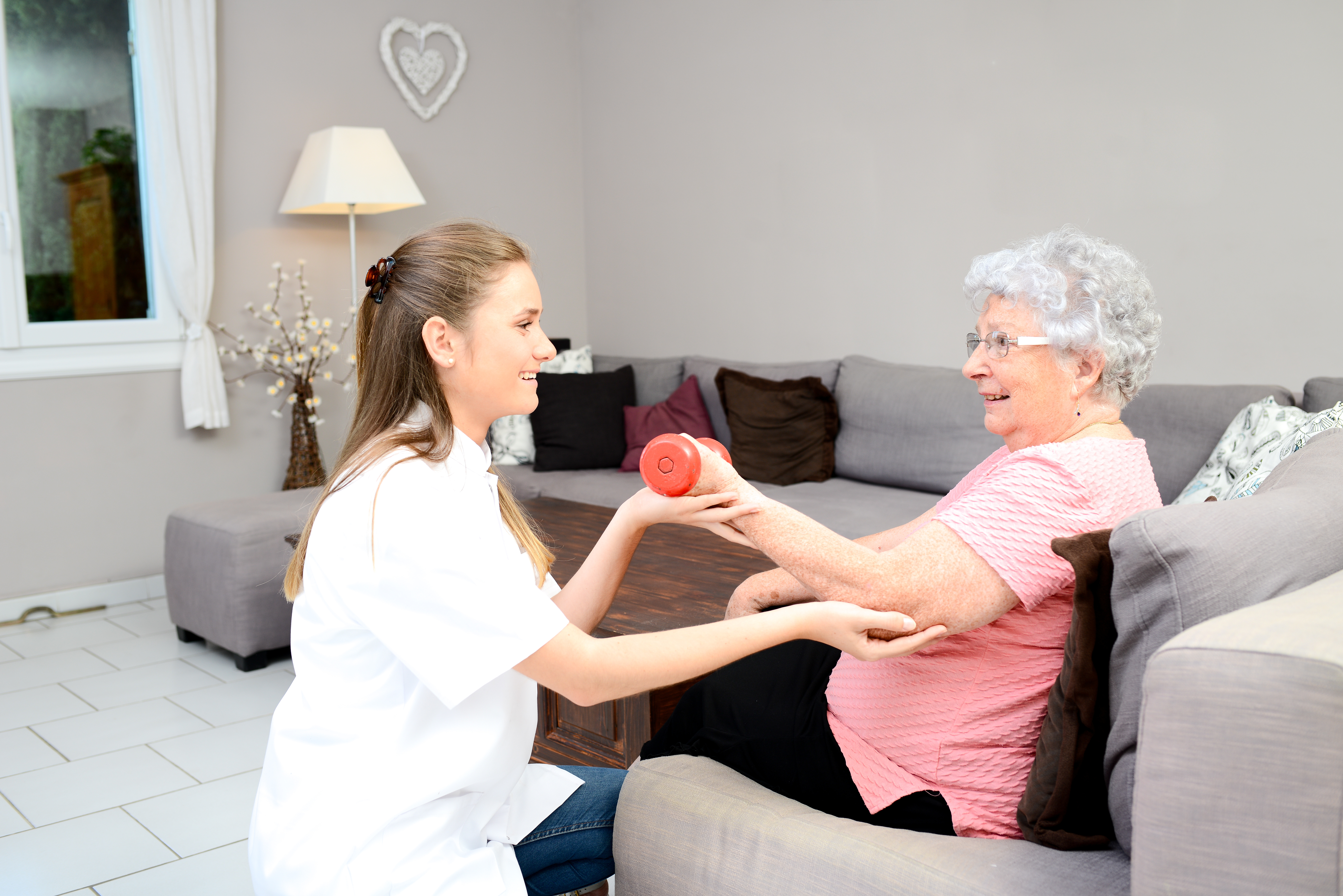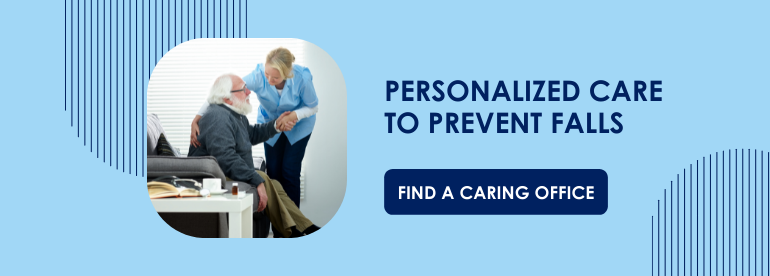Every 11 seconds, a senior is treated in the hospital for a fall-related injury. Even a small fall can have huge consequences for a senior’s health and wellbeing. However, many falls can be prevented with proper precautions. One effective way to reduce fall risks in seniors is exercise!
Regular exercise can help strengthen muscles, improve balance, and even help with cognition, and all of these benefits can help a senior reduce their risk of falling. But when it comes to exercising, many of us need a little extra motivation and support. Caregivers can help seniors perform exercises regularly, offering a stable hand or moral support through challenging exercises. We’ve previously outlined some great fall prevention exercises and balance exercises for seniors, but in this post, we want to focus on how a caregiver can assist with fall prevention exercises.
Do It Together
Exercise can be challenging for anyone at any age. Seniors especially may find it difficult to perform exercises and quickly lose motivation. But a caregiver can perform the exercises with their client to help them feel more motivated and upbeat. By joining a senior in their exercises, a caregiver can help provide encouraging words, friendly competition, and increased focus. With a partner, seniors may feel less discouraged and actually enjoy their time doing exercises. Plus, the caregiver can reap the benefits of exercise as well!
Example: Chair Leg Raise
One common fall prevention exercise is chair leg raise. A senior sits in a sturdy chair, holds the bottom of the chair with their hands, and extends one leg straight out. After extending the leg, they should bring the knee toward the chest while keeping their upper body still. To make this exercise more enjoyable, a caregiver could pull up their own chair and do the exercise alongside their senior client.
Provide a Helping Hand
Many fall prevention exercises aim at helping seniors improve their balance. To do so, seniors need to put their balance to the test. Seniors who are prone to falling may feel unsteady and need a helping hand as they work to improve their balance. Caregivers can give a hand or a shoulder to help stabilize their clients. They can also spot seniors during their exercise to help them feel safe and stable. When a senior knows that someone is there to help them if they start to lose their balance, they feel more confident in their movements.
Example: Single-Leg Stand
One fall prevention exercise that puts balance to the test is a single-leg stand. Seniors simply lift one leg for 10 to 15 seconds to practice their balance. However, they may feel like they’re going to fall or they may want to put their foot down early to help them regain control. A caregiver can provide stability until a senior improves their balance to the point that they no longer need assistance. Likewise, a caregiver can ensure that a senior uses a stable piece of furniture or even a wall to help anchor them.
Encourage Breaks
Seniors may want to power through their exercises, resulting in fatigue or even improper movements. Caregivers can help by encouraging seniors to set the right pace for themselves. They can also watch a senior’s movements to make sure each movement is correct. As needed, caregivers should instruct their clients to rest in between exercises and workouts. The body needs to heal, and without proper rest, a senior could actually injure themselves during a workout.
Example: Weightlifting
Seniors who are at a high risk of falling may benefit from weightlifting, which can help strengthen specific muscle groups. However, seniors should adequately rest in between each set of reps and even between each set of exercises. Caregivers can help monitor their clients for signs of fatigue, muscle strain, and more to ensure their safety.
Additionally, caregivers can monitor any exercise wearables a senior may have. Many health trackers can measure heart rate, which can be a good indication of the amount of work seniors are putting in. If a senior’s heart rate gets too high, a caregiver can intervene and help their client rest.
Hold a Senior Accountable
Seniors who are at a high risk of falling may be prescribed a set of exercises from their physical therapist or doctor. These exercises are crucial to helping a senior avoid falls and remain healthy. However, seniors may only see their doctor or physical therapist for short time each month. A caregiver can help seniors remain accountable outside of that time. One great way to help seniors remain accountable is to set short-term goals with them. Goals can also help increase motivation. These goals could include reduction in stress, sleep better, more energy, etc.
Example: Slow Toe Touches
Another fall prevention exercise is toe touches. These sound simple but they can be challenging for seniors and other adults alike. To perform a toe touch, a senior should reach toward their toes as far as they can. It’s okay if they can’t reach their toes. For best results, try to keep the legs straight the entire time. Seniors should go slow during this exercise to avoid losing their balance. Caregivers can help seniors measure how far they can reach during their slow toe touch and even set a goal for flexibility.
As a caregiver works with their client to perform fall prevention exercises, they can strengthen their relationship with their client while also helping them feel more confident in their abilities. This partnership can help seniors stay upbeat and motivated throughout a difficult period in their lives. We know that caregivers can play a huge role in fall prevention, which is why we’ve outlined a Fall Prevention Specialty Program. Each of our caregivers is trained to identify fall risk factors, address home hazards, and assist seniors in fall prevention activities — like exercise! Learn more about how we can help you or a loved one remain healthy, happy, and at home.


